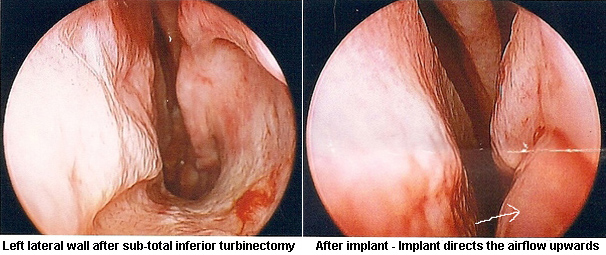
Understanding Empty Nose Syndrome (ENS): A Growing Concern in Post-Nasal Surgery Patients
Introduction
Empty Nose Syndrome (ENS) is a rare but emerging condition in the ENT (Ear, Nose, and Throat) field. While nasal surgeries like turbinate reduction are intended to improve airflow and address nasal congestion, they can sometimes lead to unexpected symptoms. These symptoms often leave patients feeling frustrated and misunderstood. In this blog, we’ll explore what ENS is, its causes, symptoms, and the latest developments in treatment.
What is Empty Nose Syndrome (ENS)?
Empty Nose Syndrome (ENS) refers to a paradoxical condition where patients experience a sensation of nasal obstruction even after their nasal passages have been surgically cleared. The primary goal of surgeries like turbinate reduction is to improve airflow, but in some cases, this can result in an overwhelming feeling of suffocation and dryness.
Common Symptoms of ENS:
1.Nasal Obstruction: Despite clear nasal passages, patients feel like their nose is blocked.
2.Chronic Dryness: A persistent dry feeling in the nose and throat due to lack of moisture.
3.Difficulty Breathing: Patients may feel like they cannot breathe properly through their nose, forcing them to breathe through their mouth.
4.Sleep Disturbances: Sleep apnea, snoring, and poor sleep quality are common complaints.
5.Psychological Effects: Anxiety, depression, and frustration are frequent as patients struggle with constant discomfort.

Recent Case Highlight: Bradley Rhoton’s Struggle with ENS
Bradley Rhoton, a 43-year-old man from Boston, is a prime example of someone suffering from ENS. After undergoing nasal surgery in 2018 to improve his breathing, he experienced an unexpected turn of events. Instead of feeling relief, Rhoton developed severe nasal congestion, sleep disturbances, and fatigue.
Despite visiting numerous specialists, it wasn’t until years later that he was diagnosed with ENS. The condition significantly impacted his quality of life, leading to feelings of suffocation and the need for constant mouth breathing.
Thankfully, Rhoton found temporary relief through nasal gel injections, and he’s considering more permanent solutions, including cartilage implants, to restore his nasal function. His journey underscores the need for awareness around ENS and more thorough pre-surgical counseling for patients.

What Causes ENS?
ENS occurs when nasal structures like the turbinates, which play a crucial role in humidifying and filtering air, are surgically reduced or removed. While turbinate reduction surgery is commonly performed to alleviate chronic nasal congestion, it can sometimes lead to the loss of the body’s natural ability to regulate airflow, moisture, and pressure within the nasal passages.
This can result in the sensation of air being too “dry” or “hot” when inhaled, and in some cases, it might also trigger psychological symptoms like anxiety or a feeling of suffocation.
Latest Research and Treatments for ENS
Research into ENS is still evolving, and treatment approaches are being explored. Here are some of the most promising developments in the treatment of ENS:
1.Regenerative Therapies
- There is growing interest in using regenerative medicine to help rebuild damaged tissue in the nasal passages. Stem cells, growth factors, and other biological agents are being tested to regenerate the turbinate tissues and restore natural nasal function.
2.Surgical Approaches to Restoration
- Some patients may benefit from revision surgery, aimed at restoring the lost nasal structures or introducing implants like cartilage to mimic the function of the turbinates. These surgical options are still being explored and tested in clinical settings.
3.Psychological and Supportive Therapies
- ENS can also take a toll on the mental health of patients. Therefore, psychological support, including counseling and therapy, has become an integral part of ENS treatment. Coping strategies and mental health support are important in helping patients adapt to life with ENS.
4.Nasal Moisturizing Treatments
- Simple treatments like nasal saline sprays, humidifiers, or gel fillers may provide temporary relief from dryness and discomfort caused by ENS. These methods can help moisten the nasal passages and make breathing feel less suffocating.
How Can ENS Be Prevented?
While there is no guaranteed way to prevent ENS, patients considering nasal surgery should be aware of the potential risks and discuss them thoroughly with their ENT surgeon. It is important for patients to ensure that the procedure is absolutely necessary and to weigh the risks of over-reduction of nasal structures.
In some cases, a less invasive approach to surgery might be recommended to reduce the likelihood of ENS. Additionally, post-surgical care that includes regular follow-up visits with the ENT specialist can help prevent complications.
Conclusion
Empty Nose Syndrome is an emerging concern in the ENT world, particularly for those who undergo nasal surgeries like turbinate reduction. While the condition is not fully understood, ongoing research is focused on developing effective treatments and improving the quality of life for those affected.
If you are considering nasal surgery, it’s important to consult with an experienced ENT specialist who can help you understand the risks and make informed decisions. Early diagnosis and personalized treatment plans can make a significant difference in managing ENS symptoms and improving patient outcomes.
Final Thoughts
Patients experiencing symptoms of nasal obstruction or dryness following nasal surgery should seek immediate medical attention. The condition may not always be immediately apparent, but with the right care, it can be managed effectively.
Stay informed about the latest research on ENS, and don’t hesitate to reach out to specialists who are working hard to find better treatments for this complex condition.
